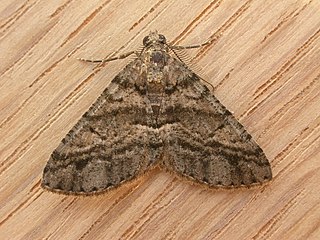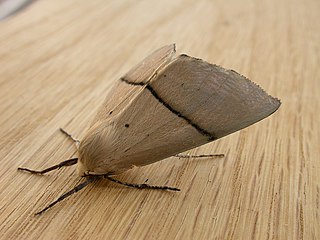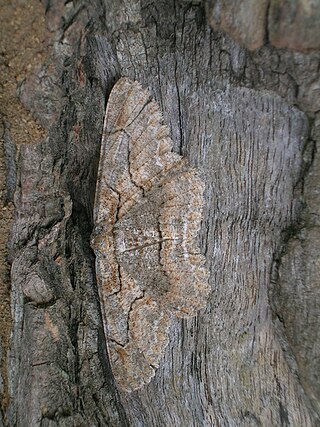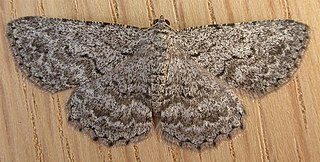
Lipogya eutheta, the grey bark moth, is a moth of the family Geometridae first described by Alfred Jefferis Turner in 1917. It is found in the Australian states of Queensland, New South Wales, and Victoria. They have a wingspan around 2.5cm.

Amelora is a genus of Lepidoptera moths in the family geometrid moths (geometridae) that reside in Australia. The Encyclopedia of Life (EOL) has identified four of its key attributes: bilateral symmetry, biting-chewing mouthparts acting as its feeding structure, having a holometabolous developmental mode, and being multicellular.
Apheloceros is a monotypic moth genus in the family Geometridae. Its single species, Apheloceros dasciodes, is found in Australia. Both the species and genus were first described by Alfred Jefferis Turner in 1947.

Casbia is a genus of moths in the family Geometridae erected by Francis Walker in 1866.

Cryphaea is a monotypic moth genus in the family Geometridae. Its single species, Cryphaea xylina, is found in Australia. Both the genus and species were first described by Turner in 1917.
Eurychoria is a genus of moths in the family Geometridae erected by Louis Beethoven Prout in 1916.

Gastrophora is a monotypic moth genus in the family Geometridae. Its only species, Gastrophora henricaria, the fallen bark looper or beautiful leaf moth, is found in the south-east corner of Australia. Both the genus and species were first described by Achille Guenée in 1857.
Heterogena is a monotypic moth genus in the family Geometridae. Its only species, Heterogena exitela, is found in Australia. The genus and species were described by Turner in 1947.

Hypomecis is a genus of moths in the family Geometridae first described by Jacob Hübner in 1821.
Lacistophanes is a monotypic moth genus in the family Geometridae. Its only species, Lacistophanes hackeri, is found in the Australian state of Queensland. Both the genus and species were first described by Turner in 1947.

Lipogya is a genus of moths in the family Geometridae described by Warren in 1898. All are from Australia.

Milionia is a genus of moths in the family Geometridae erected by Francis Walker in 1854.

Parepisparis is a genus of moths in the family Geometridae erected by George Thomas Bethune-Baker in 1906.

Phelotis is a monotypic moth genus in the family Geometridae erected by Edward Guest in 1887. Its single species, Phelotis cognata, the long-fringed bark moth, first described by Francis Walker in 1860, is found in Australia.

Phrataria is a genus of moths in the family Geometridae erected by Francis Walker in 1863. All the species in this genus are known from Australia.

Psilosticha is a genus of moths in the family Geometridae first described by Edward Meyrick in 1892.

Syneora is a genus of moths in the family Geometridae erected by Alfred Jefferis Turner in 1917. All the species are found in Australia.

Taxeotis is a genus of moths in the family Geometridae described by Edward Guest in 1887. All the species in this genus are found in Australia.

Oenochrominae is a subfamily of the moth family Geometridae.













